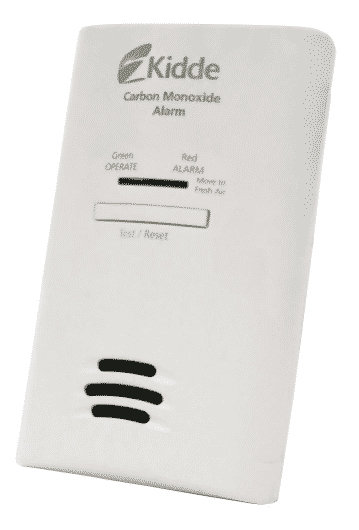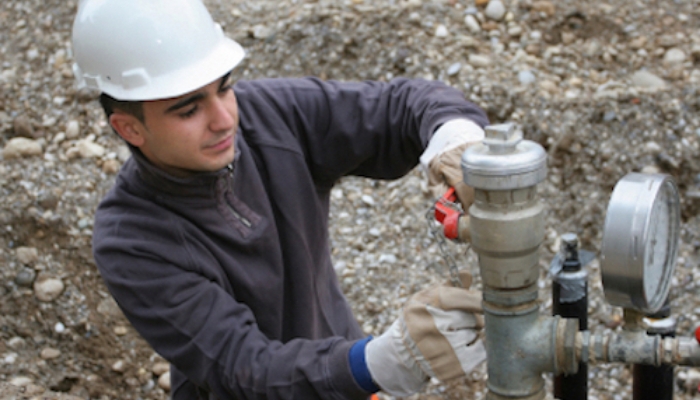
How Long Does A Carbon Monoxide Detector Alarm Last?
Carbon monoxide detector lifespan typically lasts between 5 and 7 years, although some co detector lifespan models may last up to 10 years. It’s important to be aware of your smoke and carbon monoxide detector alarm’s lifespan and replace it when necessary, as even a battery change won’t revive an expired alarm.
Here are some additional things to keep in mind about carbon monoxide alarms:
- Environmental factors: Extreme temperatures and humidity can shorten a CO alarm’s lifespan.
- Yearly battery replacements: Unless your alarm has sealed 10-year batteries, you should replace the batteries in your CO alarms annually.
- End-of-life warnings: Some alarms will chirp or beep to indicate that they are nearing the end of their lifespan.
If you’re unsure about the age of your carbon monoxide alarm, it’s best to err on the side of caution and replace it. You can usually find the manufactured date on the back of the alarm.
Where To Check For CO Detector Expiration Date?
In 2009, Underwriters Laboratories (UL), began requiring an end-of-life warning to alert homeowners when their carbon monoxide alarm has reached the end of its useful life. Carbon monoxide alarms do not detect the presence of carbon monoxide when in end-of-life mode.
- Check the back of your detector for either a build date or an expiration date.
- If there’s no date or your CO monitor it is more than seven years old, replace it now.
Where To Install Carbon Monoxide Detector Alarms?
Illinois homeowners and landlords are required by law Public Act 094-0741 to install at least one approved carbon monoxide alarm, in operating condition, within 15 feet of every sleeping room.
- Carbon monoxide neither rises toward the ceiling nor sinks to the floor.
- CO is about the same weight as air. So detectors that don’t have a digital display to read can be mounted anywhere as long as they’re at least 15 in. below ceilings.
- Install one on each level of your home, including basement.
- Locate CO detector in hallways near bedrooms but at least 15 ft. away from fuel-burning appliances.
- Small children around? Consider buying a talking CO detector. A voice warning is more effective at directing children than a shocking horn.
- Building owners responsibility is to supply and install all required alarms.
- Tenant responsibility is to test and to provide general maintenance for the alarms.
What Is Carbon Monoxide Gas?
Carbon monoxide (CO) is a poisonous, colorless, odorless and tasteless gas. Exposure to a small amount of carbon monoxide CO which is a colorless, odorless gas over time can cause symptoms like shortness of breath, nausea, dizziness, lightheadedness, or headaches. High levels can prove fatal, with approximately 450 people dying every year of CO poisoning, according to the Centers for Disease Control and Prevention.
What Is A Dangerous Level Of CO?
As CO levels increase and remain above 70 ppm, symptoms may become more noticeable (headache, fatigue, nausea). As CO levels increase above 150 to 200 ppm, disorientation, unconsciousness, and death are possible.
Call The Oldest Gas Expert.
Honest. Reliable. Affordable. Experienced. We’re dedicated to doing things the tried-and-true way. It’s gotten us this far. We see no reason to change it now. That’s the PDM Plumbing, Heating, Cooling Since 1885 difference.
- A reputation that is second to none. Some of the area’s most trusted businesses from hospitals to manufacturing to education call on PDM for service. Plus, over 1,300 Five Star Reviews shows we have your back.
- Seven generations of service means we are experienced in all types of plumbing, heating and cooling systems. We are familiar with your situation regardless of what it is.
- Stay on the cutting edge of information. We bring this education directly to you, so you can be sure you have the very best available.
- Provide you with a phenomenal service experience. We will treat you with the utmost respect and courtesy and deliver your service on time.
- Happiness guarantee. If you aren’t completely thrilled with your repair, maintenance or replacement experience you receive from our company, we will rush back to your location at no charge and no obligation to correct the situation.
- As Silver Cross Citizen of the Year 2024 and The Herald News Will County’s Readers’ Choice Award winner, we search high and low for the best repair and replacement options. Your PDM partner will solve your problem the right way, on-time, and guaranteed. You’ll learn what needs fixing, what needs replacing, what needs maintaining, and what can wait.
Contact PDM for help with gas leak testing service, gas piping repair or install, gas water heater service, and any plumbing, heating and air conditioning maintenance and repair. Call the oldest gas expert 815-390-7095 and get back to normal fast in the greater Bolingbrook, Homer Glen, Joliet, New Lenox and Plainfield, IL area.







